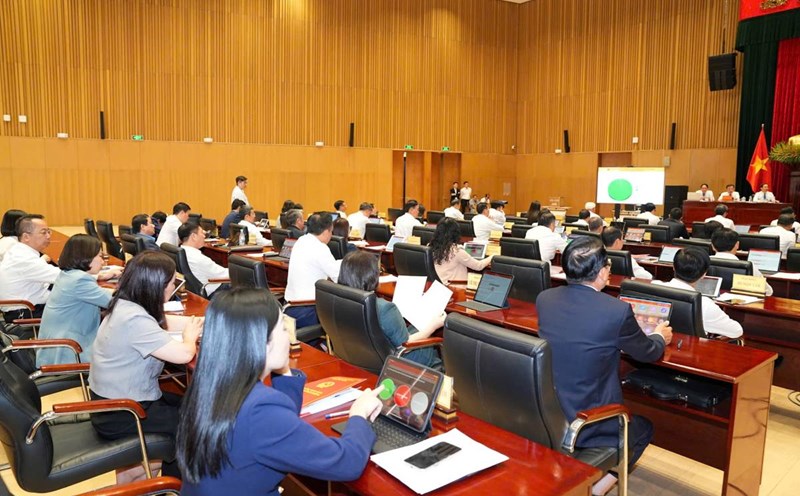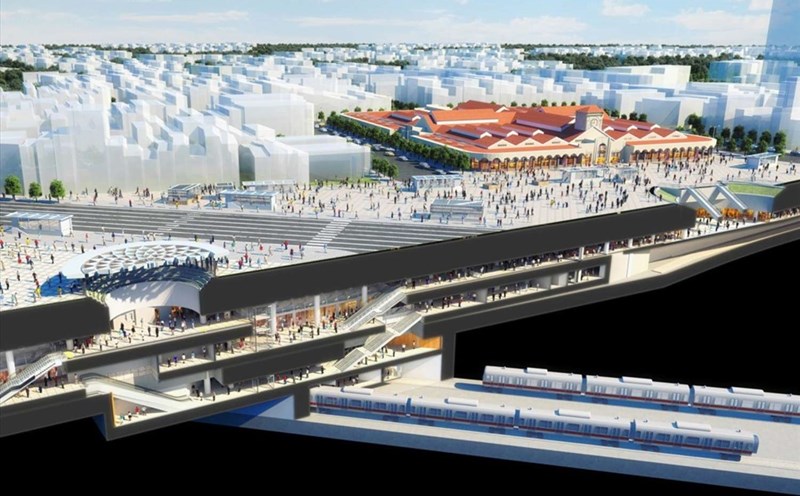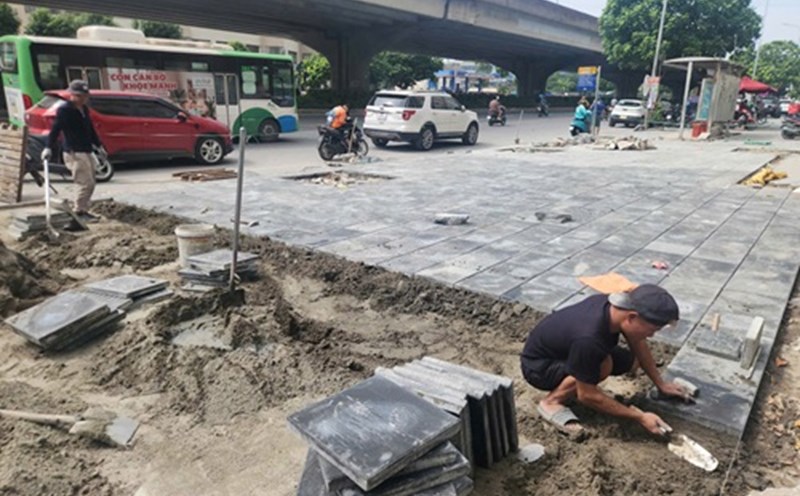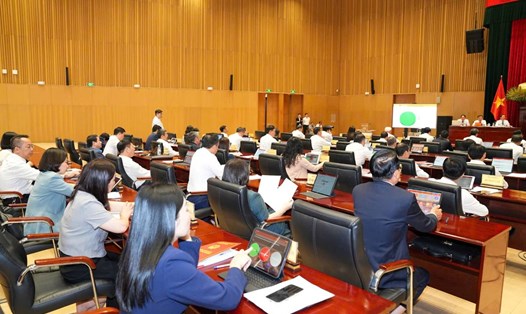The Pheo - Che urgent flood prevention project has a total investment of more than 597 billion VND, invested by the Project Management Board of Agricultural Works of Hoa Binh province (old), now the Project Management Board of Hoa Binh area.
The project will renovate and upgrade the dike combined with a 15.8km long traffic road, from Pheo area (Ky Son ward) to Che area (Thinh Minh commune, bordering Hanoi). The goal is to ensure safety for flood prevention and control, flood control in the downstream area of the Da River, while connecting inter-regional traffic between Hoa Binh - Phu Tho - Hanoi.
In March 2024, the project started construction, and is scheduled to be completed by the end of 2025. However, up to now, the construction progress is sluggish.
According to Lao Dong Newspaper's reporter in late October, after days of prolonged rain due to the impact of the weather, the weather is now dry, and the project has resumed construction. At this time, the contractor is focusing on the construction of the final section of the project, in Nha hamlet, Thinh Minh commune.
According to Mr. Dinh Van Hoan, project technical officer of My Phong Company (construction unit), the enterprise mobilized dozens of machines and vehicles to gather at the project for implementation to speed up the progress. However, the current lack of land is the biggest bottleneck of the project.
According to the Hoa Binh Regional Project Management Board, by mid-October 2025, 4 main packages are being implemented, reaching about 30% of the contract volume.
Of which, Ngoi Mai Bridge has been completed; the first 6.2km dike is under construction, culverts, retaining walls, and concrete pouring of the road surface of more than 500m long; the downstream reinforcement of Ngoi Mai Bridge has reached 33%; Ngoi Tom Bridge is in the beam casting phase, preparing to demolish the old bridge.
The project has disbursed 141 billion VND, while the capital plan assigned to 2025 is 216 billion VND. The capital is still lacking more than 384 billion VND, causing many items, especially the remaining 9.6km section of the dike, to not be implemented.
Site clearance is a major bottleneck. The 6.2km section at the beginning of the route had to reclaim more than 17 hectares of land from 344 households, but only could pay 131 households, 12 households had not received money, and the remaining 3.8km of the route had no land.
In addition, on the route, there are many households with land use right certificates, many plots of land overlapping, disputed or of production forest origin, causing the counting and determination of land types to take a long time. Some power and telecommunications projects that have not been relocated have also affected their progress.
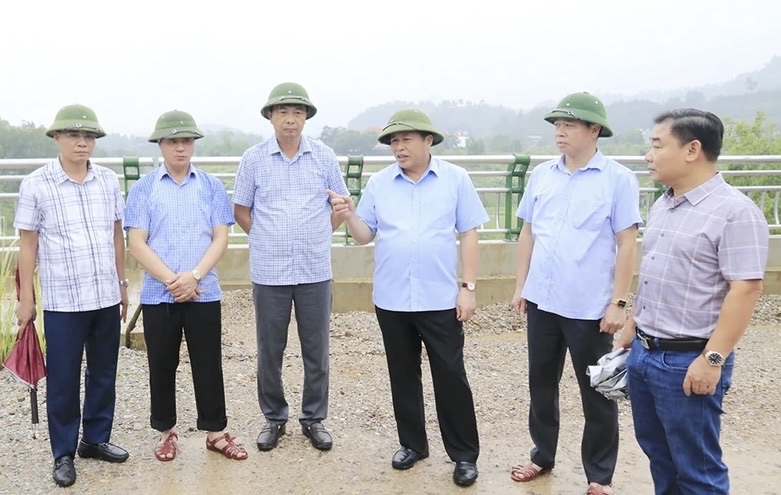
At the project progress inspection in mid-October, Vice Chairman of Phu Tho Provincial People's Committee Dinh Cong Su pointed out that the construction progress of the project is currently slower than planned.
The Vice Chairman of Phu Tho Provincial People's Committee requested the People's Committees of communes and wards to speed up the review of documents, procedures, and resettlement land plots for projects.
Investors need to implement projects on schedule, pay attention to the implementation process so as not to affect people; coordinate with relevant units to closely monitor the construction progress, while speeding up the implementation of compensation, support and resettlement.
Construction units arrange equipment, machinery, and human resources to focus on speeding up progress; continue to deploy ongoing work, overcome difficulties, and ensure the completion of projects.

